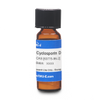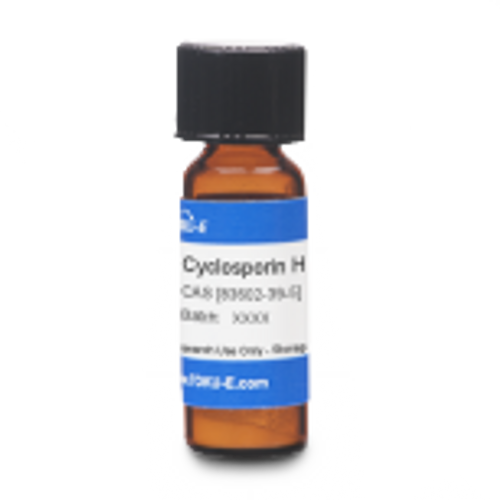Cyclosporin D, EvoPure is a hydroxylated metabolite of Cyclosporin A. Cyclosporin D and other Cyclosporin metabolites have been found to have lower (<10%) immunosuppressant activity than Cyclosporin A. Cyclosporin D has been found to reverse daunorubicin resistance in some resistant leukemia cells by possibly inhibiting the efflux functions of P-glycoprotein.
EvoPure products have been fully characterized by spectral analysis and are shipped with a comprehensive certificate of analysis containing lot-specific HPLC, MS, HNMR, and FTIR data.
For more Cyclosporin products, click here.
| Mechanism of Action | Cyclosporin B (and other Cyclosporin A metabolites) have lower immunosuppressive activity but likely operate under the same mechanism as Cyclosporin A described below. After entering a T-cell, Cyclosporin A associates with the cytosolic protein cyclophilin which helps in protein folding. Cyclosporin A binds to cyclophilins and this complex binds another cytosolic protein phosphatase called Calcineurin (protein phosphatase 2B) that dephosphorylates a transcription factor (nuclear factor of activated T-cells, or NF-AT) needed for expression of interleukin 2 (IL-2.). It also blocks the pathway to nitric oxide synthesis via tumor necrosis factor (TNFa) and Interleukin 1a. |
| Cancer Applications | Cyclosporin’s immunosuppressive properties and potential toxicity can be studied during in vitro assays. Other metabolites of Cyclosporin A (AM1, AM1c, DihydroAM1, AM19, and AM4N) can also be studied (Vollenbroeker B et al, 2005). |
| Molecular Formula | C63H113N11O12 |
| References |
Anderson MA and Gusella JF (1984) Use of Cyclosporin A in establishing Epstein-Barr virus-transformed human lymphoblastoid cell lines. In Vitro 20(11):856-858 PMID 6519667 |








